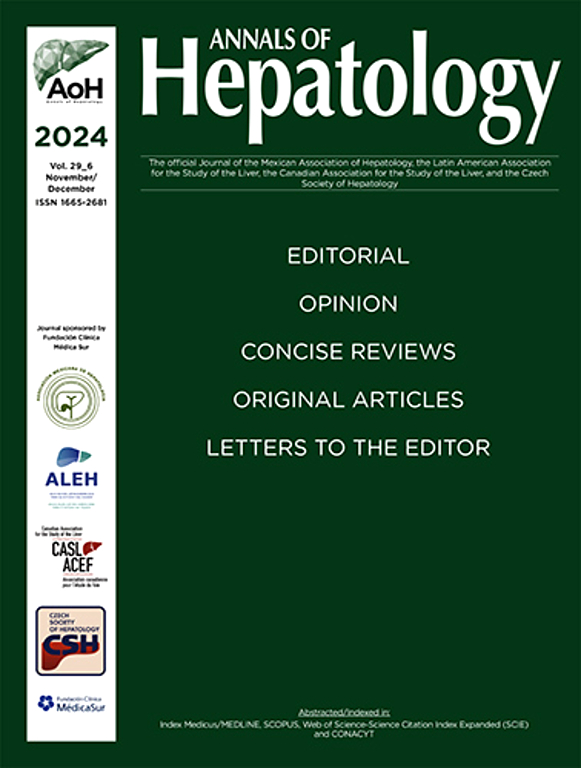P-45 ANALYSIS OF SURVIVAL RATE AND FACTORS ASSOCIATED WITH LIVER RETRANSPLANTATION: 18-YEAR EXPERIENCE IN BOGOTÁ - COLOMBIA
IF 3.7
3区 医学
Q2 GASTROENTEROLOGY & HEPATOLOGY
引用次数: 0
Abstract
Conflict of interest
No
Introduction and Objectives
Liver retransplantation is the only therapeutic option for irreversible hepatic graft failure, this situation raises ethical and practical issues, due to the diminished survival of the second graft and the disparity between the number of liver donors and potential recipients in Colombia. To compare first and third year survival between patients with a single liver transplant and those who have undergone liver retransplantation
Patients / Materials and Methods
Analytical observational study of a retrospective cohort patients with liver transplant and retransplant (over 18 years old) at the Cardioinfantil Foundation between December 2005 and December 2023. The associated factors that together explain liver retransplantation, the Cox regression model with constant time and the negative log binomial model will be used. The analysis will be performed using R software. The survival analysis of patients with liver transplant and retransplantation will be performed using the Kaplan Meier method. All statistical tests will be evaluated with a significance level of 5% (p < 0.05).
Results and Discussion
Between 2005 and 2023, 689 liver transplants were performed in adult patients at our hospital, 39 of which (5.6%) were liver retransplantation. The first year retransplant survival was 83.3% and the third year 72.2%, compared with the first year transplant survival 86.1% and the third year 82%. Of the 39 retransplant cases 21 cases (53.8%) were early (< 6 months) while 18 cases (46.1%) were late (> 6 months). Regarding the causes that led to early liver retransplantation, the most frequent was arterial thrombosis 13 (33.3%) cases, followed by primary graft dysfunction 6 cases (15.3%). For late retransplantation the most frequent cause was chronic cellular rejection 7 cases (17.9%) followed by recurrence of the primary disease 3 cases (7.6%).
Conclusions
the present study, liver retransplantation is a safe treatment option with mortality compared to liver transplantation and our results do not differ from the global epidemiology.
求助全文
约1分钟内获得全文
求助全文
来源期刊

Annals of hepatology
医学-胃肠肝病学
CiteScore
7.90
自引率
2.60%
发文量
183
审稿时长
4-8 weeks
期刊介绍:
Annals of Hepatology publishes original research on the biology and diseases of the liver in both humans and experimental models. Contributions may be submitted as regular articles. The journal also publishes concise reviews of both basic and clinical topics.
 求助内容:
求助内容: 应助结果提醒方式:
应助结果提醒方式:


